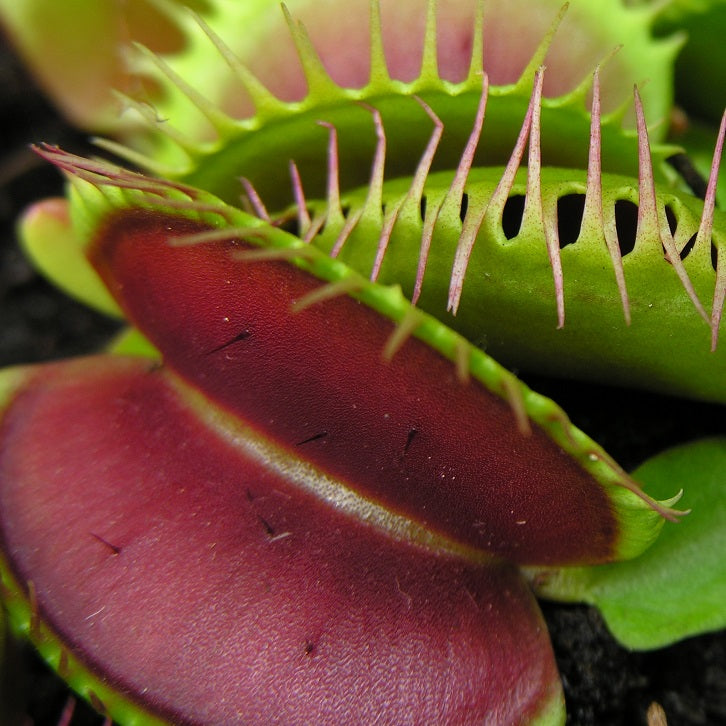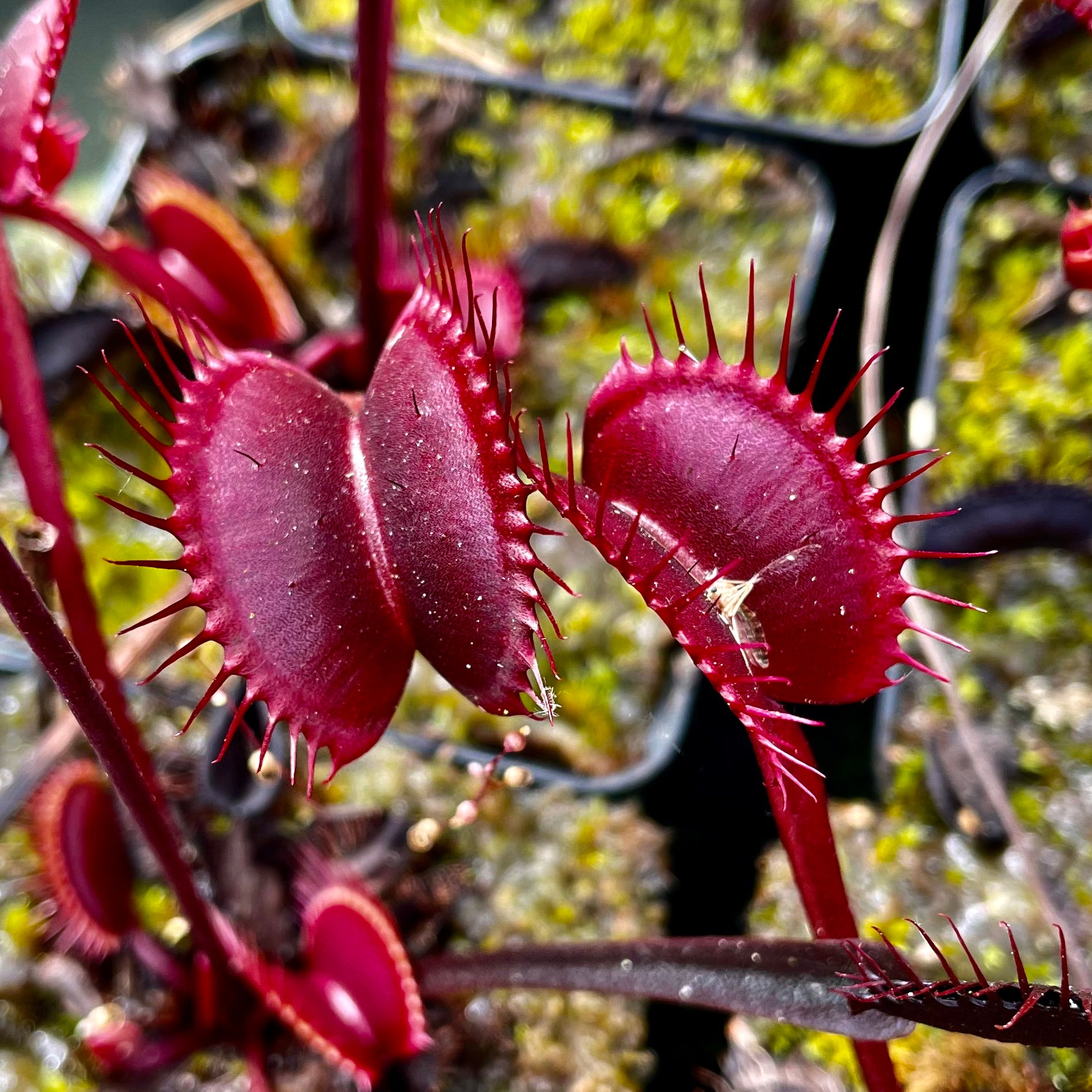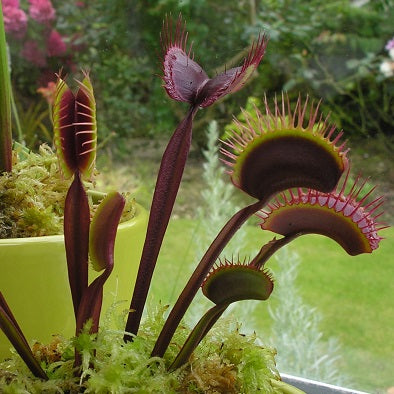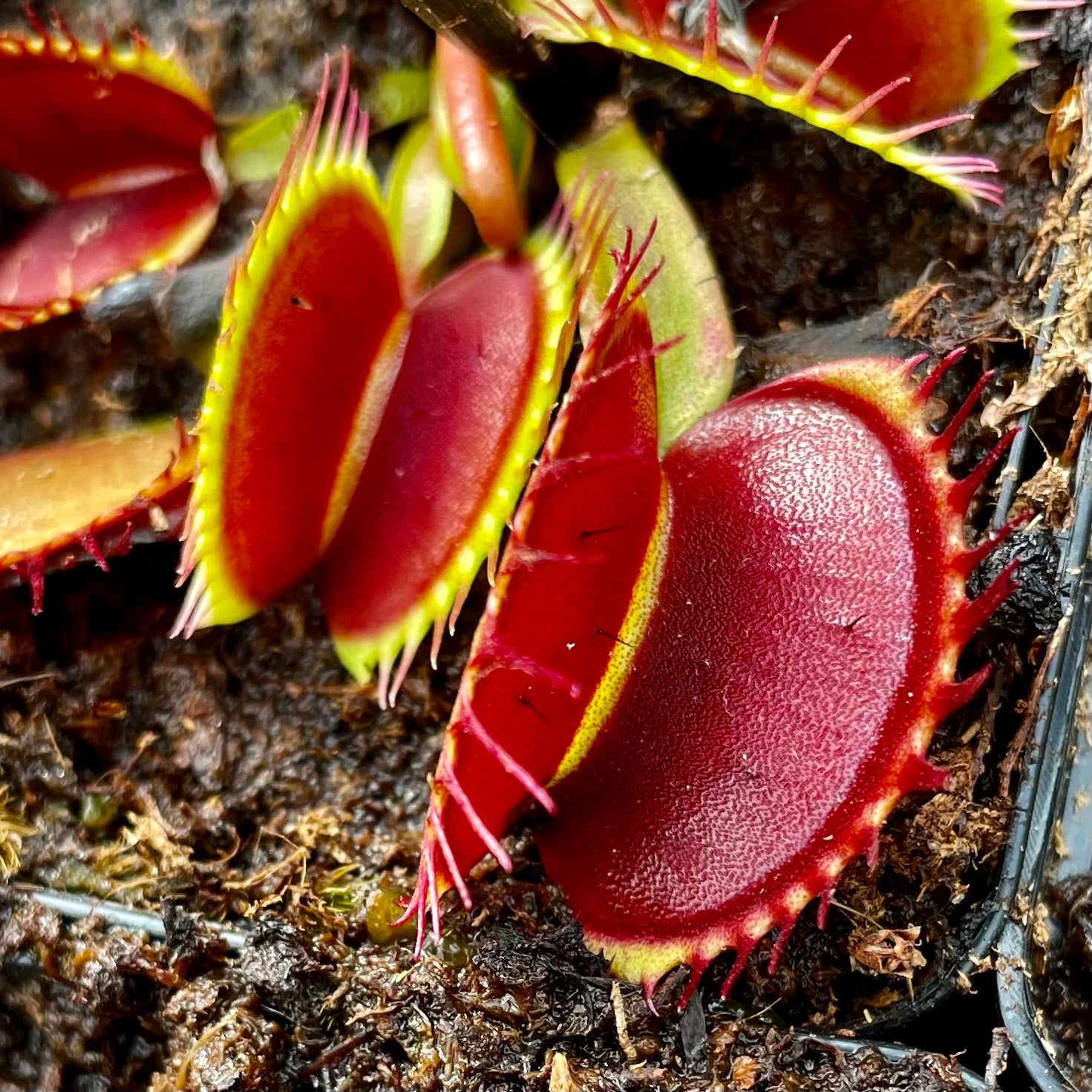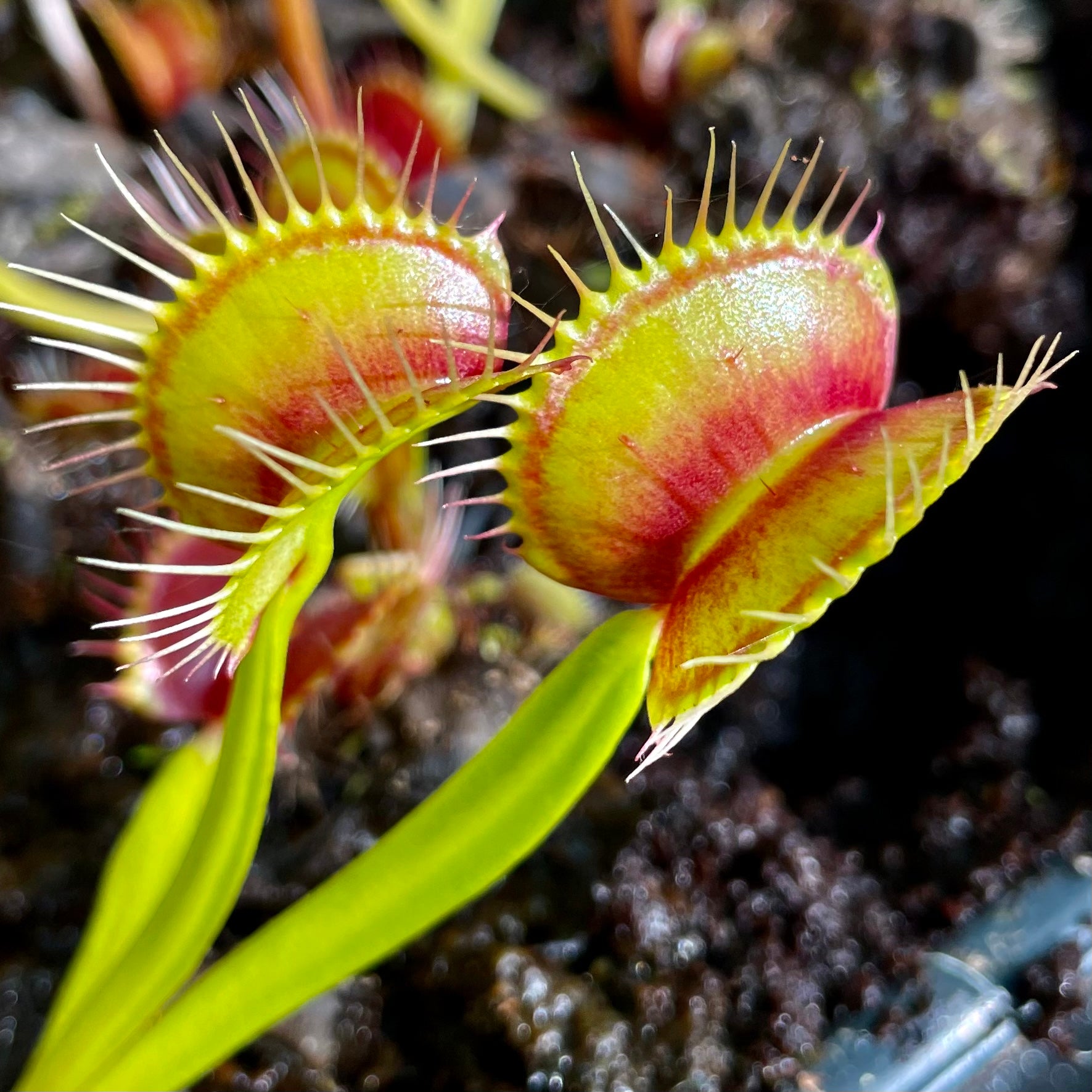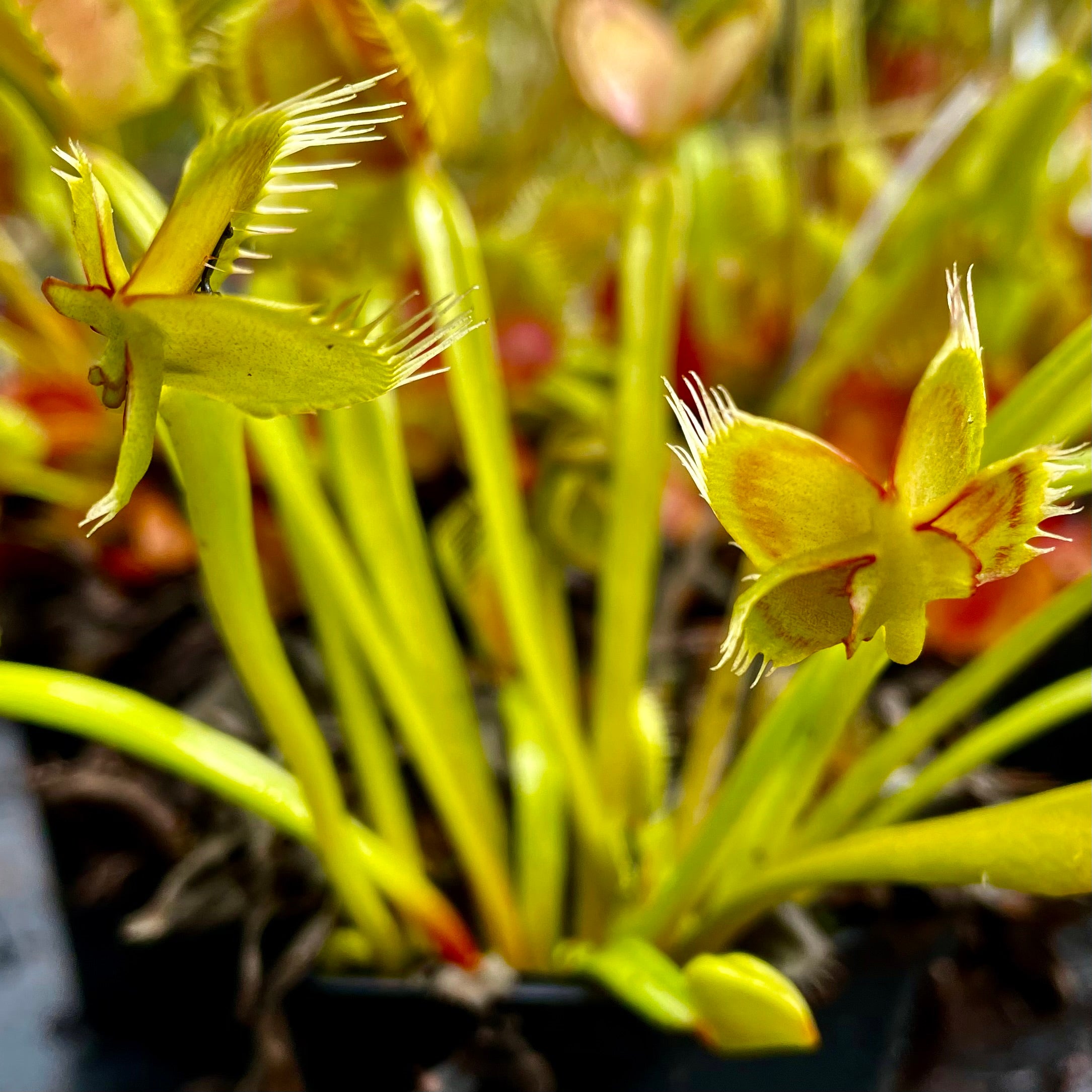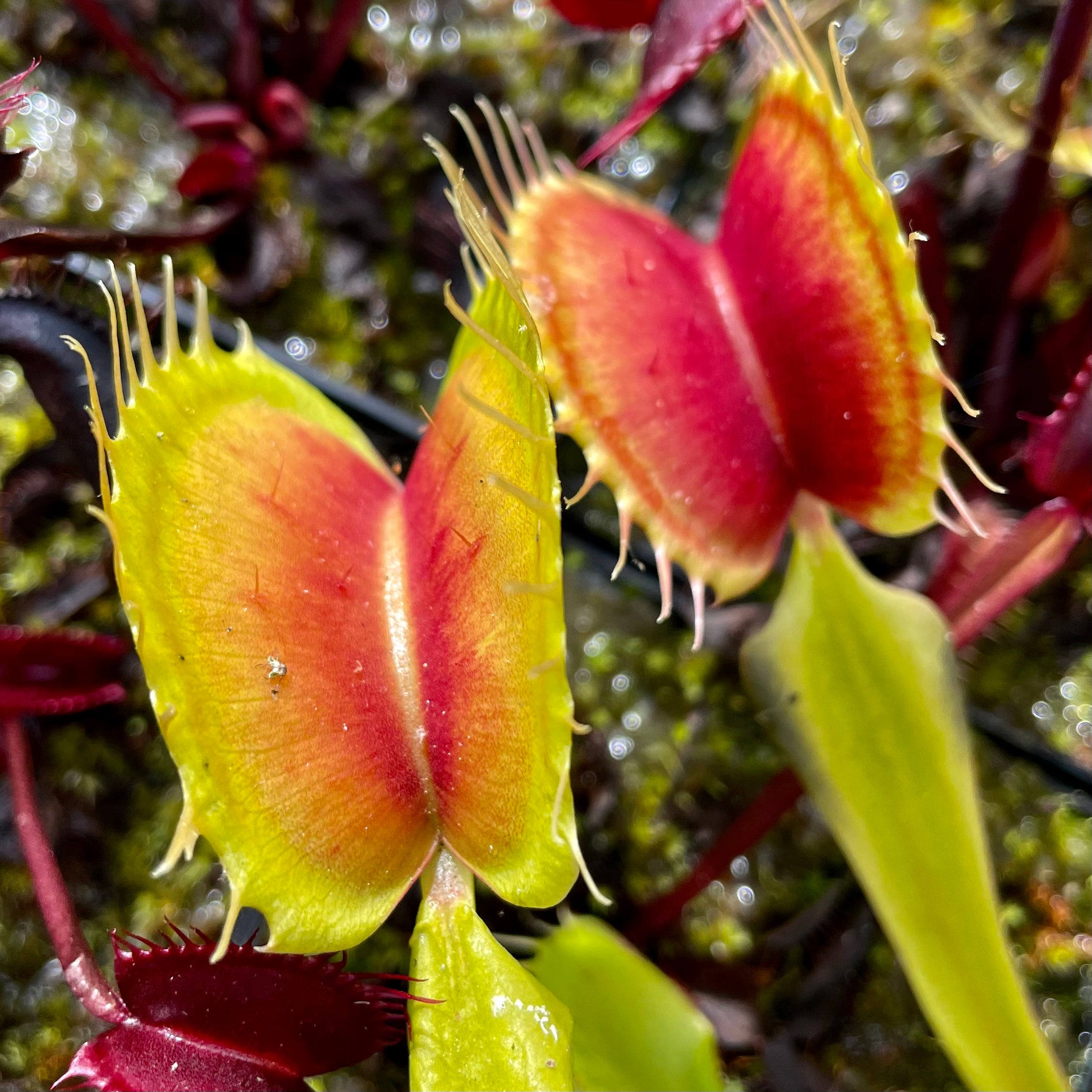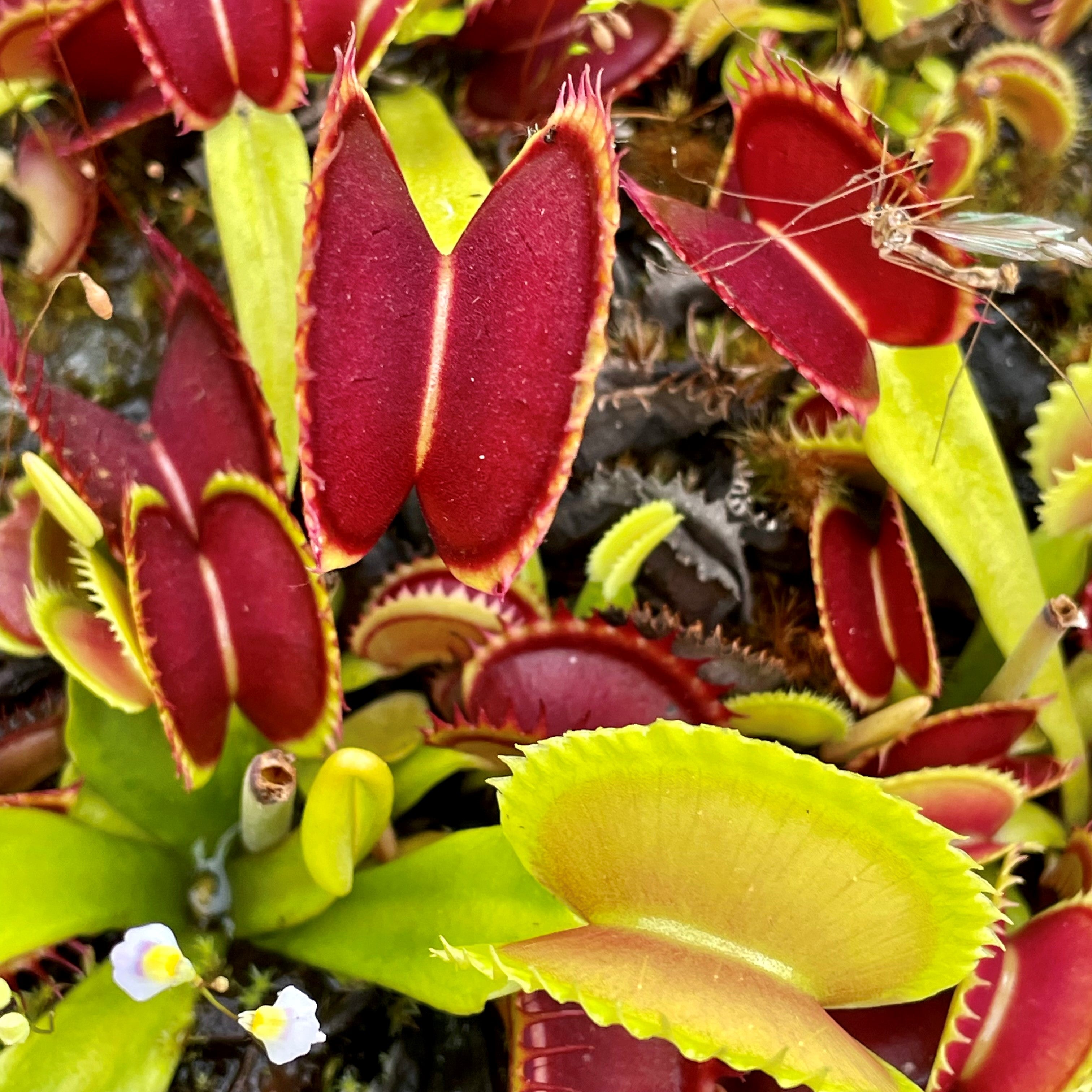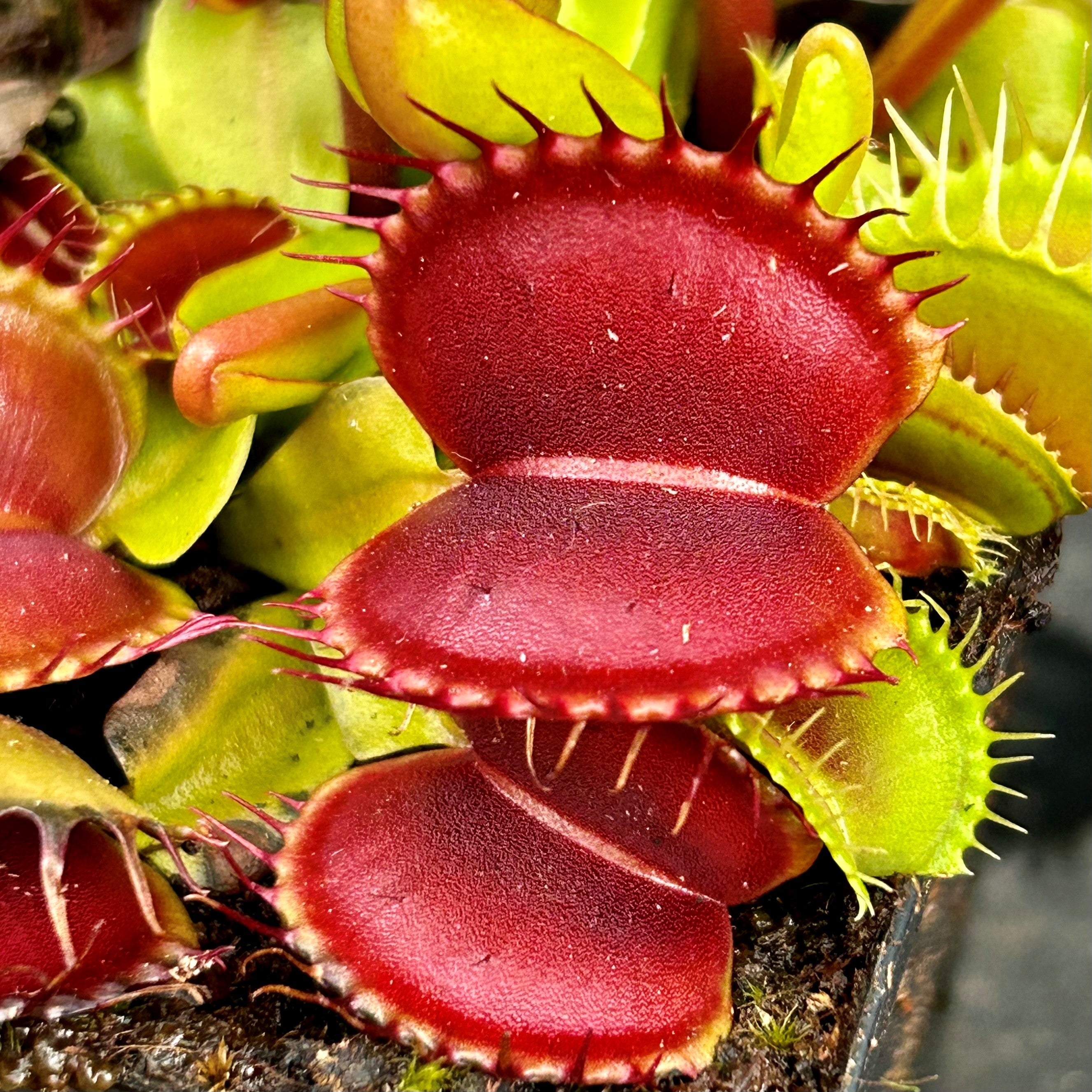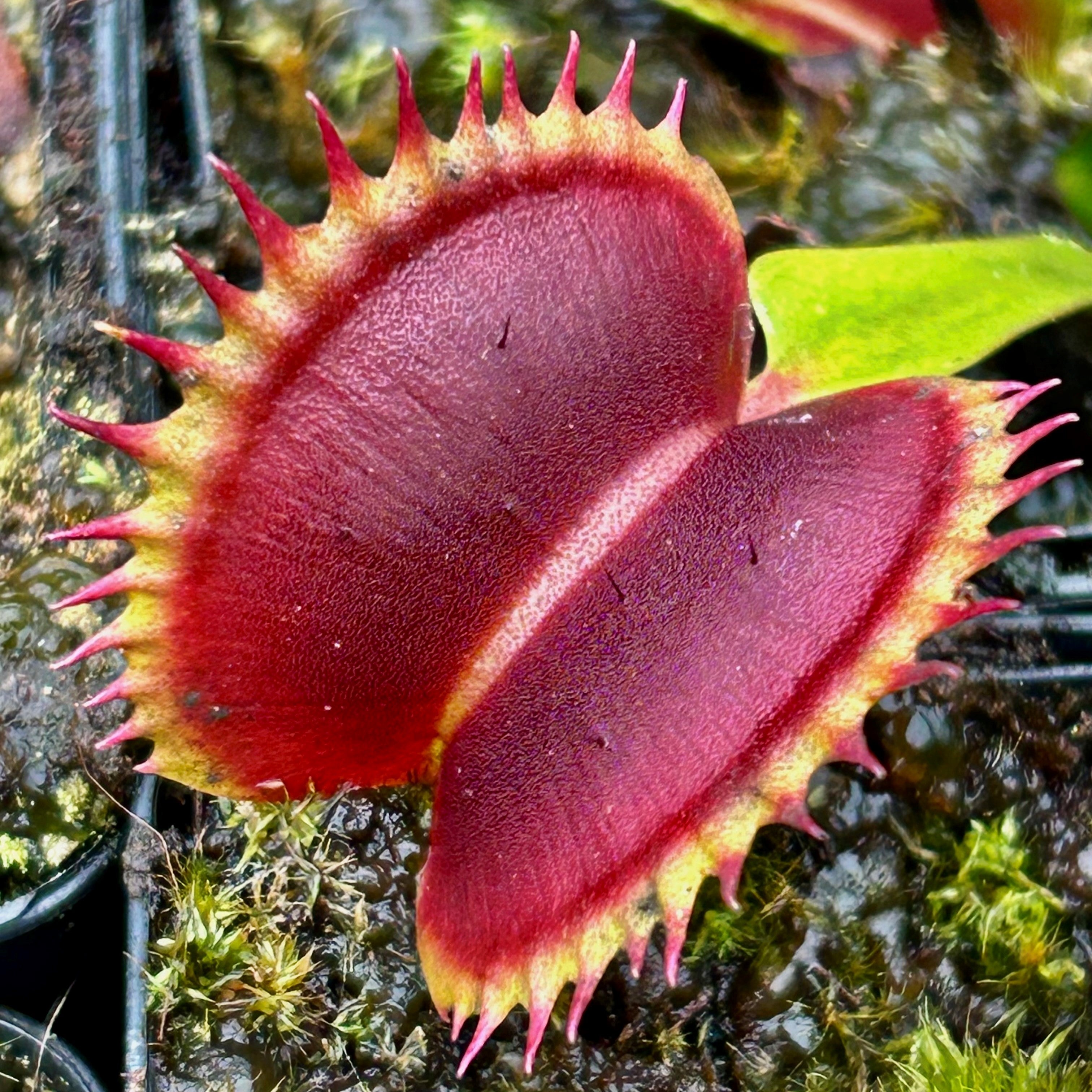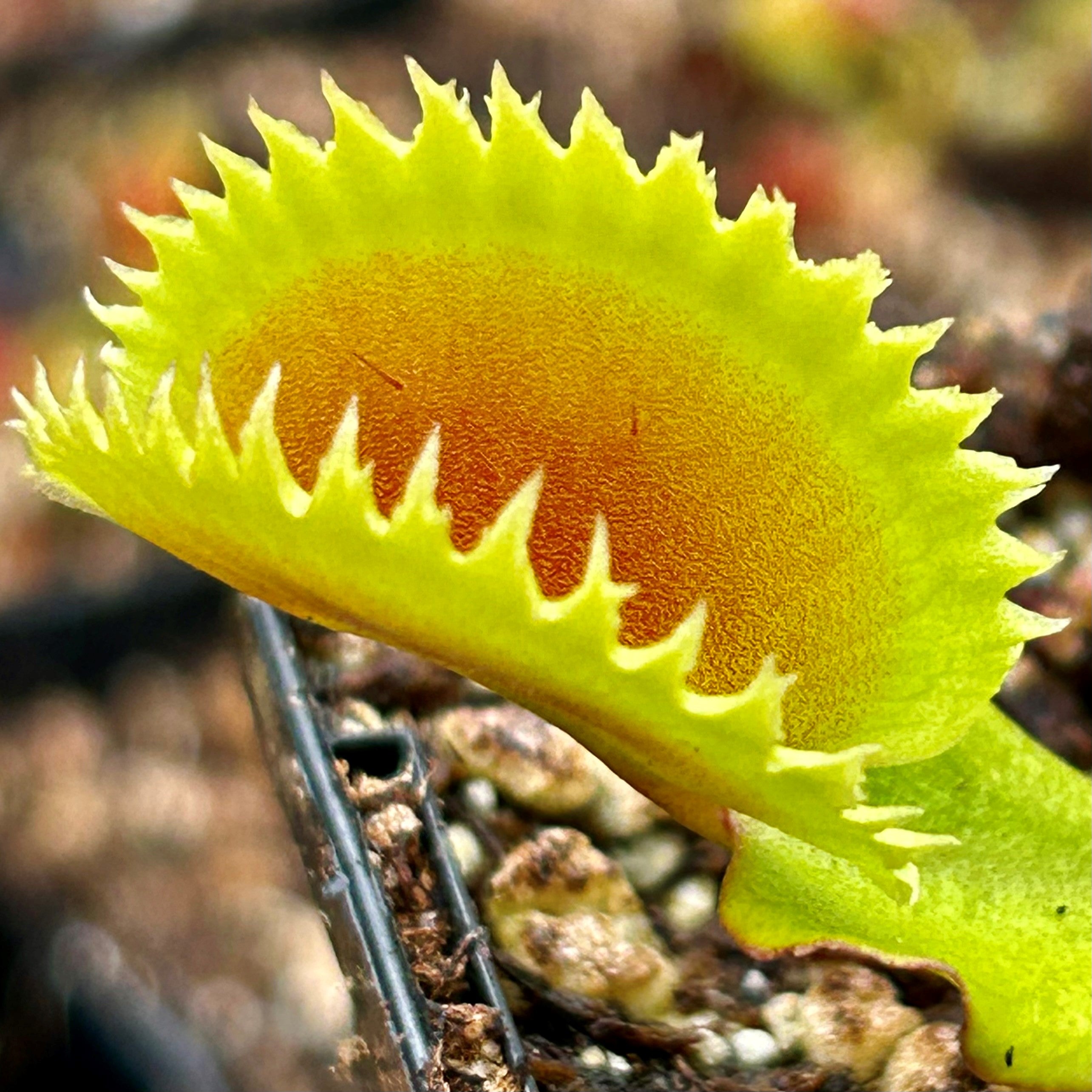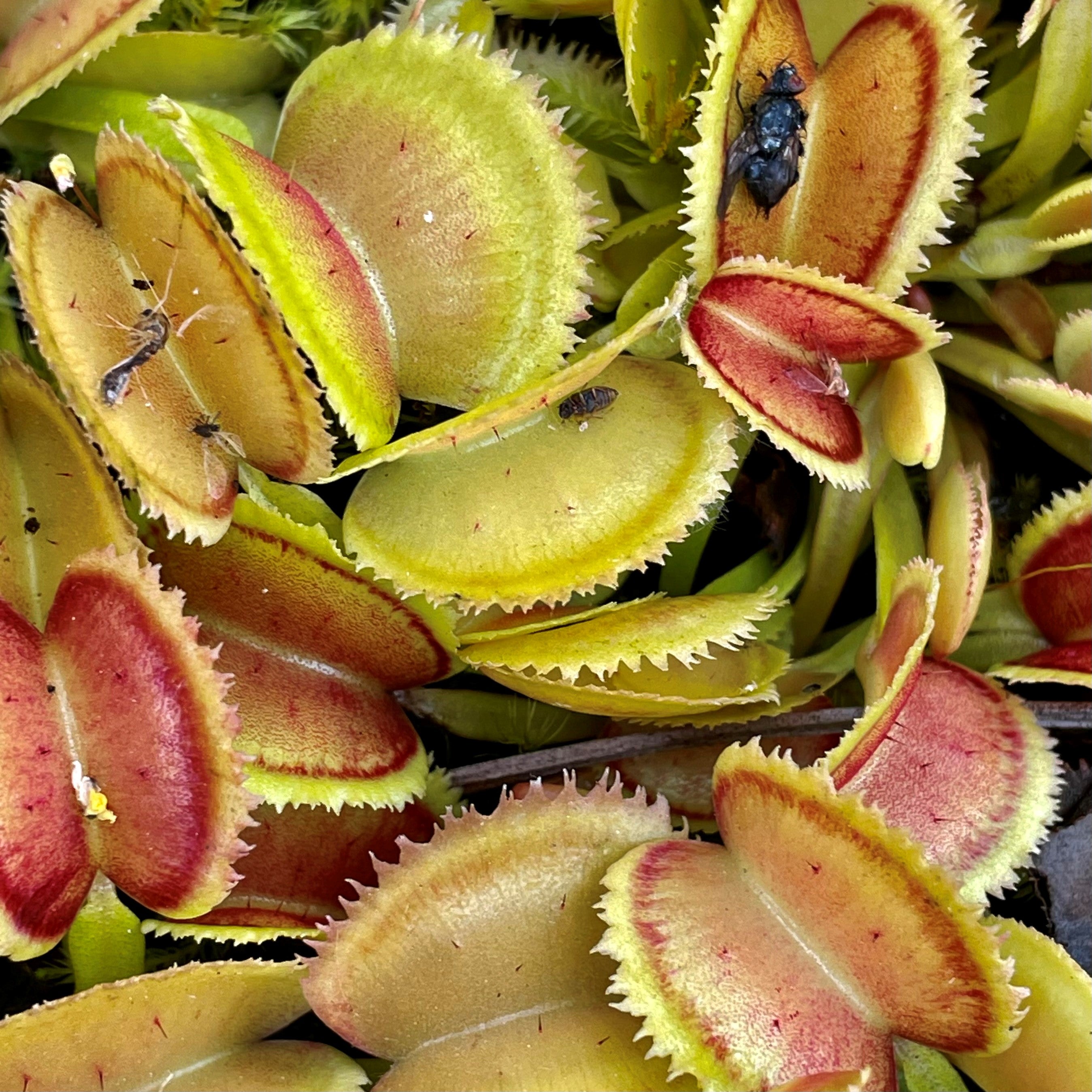DIONAEA MUSCIPULA
Now an endangered species in the wild, the Venus Fly Trap is familiar to most people. It is found only in the North and South Carolinas' in the USA, and of all carnivorous plants it is surely the most dramatic with it's jaw-like traps complete with two rows of 'teeth'.
The plant attracts insects by the red coloration of the traps, which intensifies in strong sunlight, and also by nectar which is secreted by cells along the base of the 'teeth'. Once inside the trap, the insect must touch any two of the six trigger hairs (or the same one twice). Three of these hairs are situated on each half or lobe of the leaf. This is a safeguard against the leaf being triggered by a foreign body such as a piece of debris blowing through the trap.
Once the first trigger hair has been stimulated, the second stimuli must take place within a space of 2 and about 40 seconds for the trap to work. Because of the fact that the plant can recognise the two stimuli, it is the only member of the plant kingdom that can actually count!
When first triggered, the leaf closes only loosely to allow prey items which are too small to be of value, to escape through the gaps in the teeth, but if the animal is large enough to be digested it will trigger the trap further by it's movements and the leaf will produce an airtight seal.
Digestive enzymes are then released on to the animal and it's soft parts are broken down and absorbed. The trap can close in as little as one tenth of a second, and depending on the size of the prey will stay closed for between two days and two weeks. When the trap re-opens only the outer exoskeleton remains, to be blown out or washed out by rains.
REMEMBER, PLANTS ORDERED IN THE WINTER MONTHS WILL BE SMALLER AS THEY DIE BACK AT THIS TIME OF YEAR!
Click HERE for cultivation info on this plant


